OK, so this is sort of a continuation of my PZN post. Listening to conference calls, you can tell that Pzena spends a lot of time thinking about value and deep value investing. I guess that’s because he spends a lot of time talking to potential clients and he has to sell them on the idea of deep value investing.
Deep Value Cycle
Anyway, in one of the calls, he discussed a cycle he discovered that recurred over the past 40+ years. He said there have been four deep value cycles.
First, I should say that he defines deep value as the lowest quintile by price-to-book value of the 1,000 largest capitalization names. A ‘naive’ deep value strategy is to own those (I don’t know how often it is rebalanced, though).
Anyway, here is what he said on the 1Q 2012 conference call (April 2012):
- During the last four value cycles spanning over 40 years, on average, five years after a value cycle peak, a naive deep value benchmark was still 12% behind the S&P 500 index and yet ended up with a 500 bps/year (basis points) advantage over the S&P 500 index over the length of the cycle, which lasted an average 10 years.
- This includes 7 years of outperformance during the cycle.
- Today (April 2012), exactly five years after the peak of the last value cycle, the deep value benchmark is 12% behind the S&P 500 index
He said that investors are caught in a “disaster myopia”; having exaggerated fears of the most recent fearful event (or some such).
He first described this deep value cycle in depth on the conference call held in February 2012. This is what he said:
- Cycles are long, 10 years on average with deep value outperforming in 7 of those years.
- Over the past four value cycles, deep value outperformed by 480 bps/year.
- Recent experience is consistent with these past cycles.
- Last peak was 58 months ago (as of February 2012) and deep value is 11.8% behind the S&P 500 index, almost exactly the same as the average in past cycles.
- The recent deep value upcycle started in December 2008, but was interrupted for six months in 2011, but this too is consistent with past cycles.
- There is significant pent up opportunity in the value category due to flight-to-safety and across the board, indiscriminate selling of cyclical businesses.
Anyway, I am not much into cycles; I don’t want to buy into things and sell things for cyclical reasons. I know many people try to do that and it often doesn’t work out too well. But as Howard Marks reminds us in his book, even though you won’t be able to time cycles right (know when it turns), it is important to be aware of them and where we are in the various cycles (credit cycle etc…). Large mistakes can be avoided by being aware of them. This is something I totally agree with. You can tell when a cycle is nearing an end; when credit spreads shrink too much or blow out too far etc…
This deep value cycle, to me, is similar. You don’t want to try to time in and out of it. But if you know that the deep value cycle is at a low or in the early stages of outperformance, you want to be aware of it.
Businesses Can Manage in Bad Times Too
In one of his calls, he also reminded investors that even during the high inflation, low growth period of 1975-1982, corporate ROE averaged 13.5%. Corporations are businesses run by people and not static entities. If there is low growth, they will manage for low growth. If there is inflation, businesses will manage for inflation. So whatever comes our way, businesses will manage through it.
Value Investing Makes Sense
At the PZN website, there is some interesting research. He has something posted there called the “White Paper”. You can see it here. This was posted in July 2011, so it’s a little old, but the story is still relevant. I will cut and paste some relevant charts here (without permission, but since I am spreading the gospel, I hope they won’t mind).
First, people hate stocks now because it has done poorly over the past decade:
Pzena talks about how people measure risk with volatility, Sharpe ratios and other things that measure price movements over the short term. But as we know, stocks are less risky over the longer term. Here is how he illustrates the benefit of holdings stocks for the longer term:
OK, so we’ve all seen this before. But let’s look at how this compares to the favorite asset class of the moment, bonds:
Pzena points out that on an inflation adjusted basis, bonds are really risky.
Here is a frequency distribution:
The range of possible outcomes is narrower for bonds. This is why people tend to think bonds are less risky than stocks. Stocks have a much wider range of possible outcomes, therefore it’s risky (according to conventional thinking). But which distribution would you rather own?
Also, Pzena points out that hard assets and commodities are popular now, but here is the true long term story of commodities:
So stocks are looking good, but can we do better than stocks? Pzena points out that one of the big risks in the stock market is overpaying. If you stick to value, that is a great risk mitigator for stocks:
So owning cheap stocks not only outperformed the S&P 500 index, but it did it with less volatility than the index, with a lower worst ten year loss and much lower probability of loss. What’s not to like here?
This next step of eliminating the most volatile stocks seems a bit like a post-crisis over-optimization, but still, it’s pretty interesting.
Next, he takes a look at the very popular hedge funds. It has lower volatility but not so good returns compared to cheap stocks:
And he notes that people are running to alternatives such as hedge funds post-crisis, but points out that hedge funds didn’t really protect the downside. I think these returns are from the 2007 peak in the markets through some point in 2011.
So there is Pzena’s case for value (or deep value) investing. The risk/return profile looks very favorable compared to bonds, hedge funds and commodities.
I know there is going to a be lot of “But…”s, but I do find this a compelling argument.
Current Opportunities
His second quarter 2012 Investment Analysis (July 2012) is also on the website here.
This may not be news to anyone, but he does point out that Europe is cheap now, and buying Europe doesn’t necessarily mean Europe has to do well going forward; he points out the global nature of many European companies.
But here’s the more interesting chart:
The valuation gap between low beta and high beta stocks is as high as ever. This sort of value differential is a great opportunity for deep value investors. Stock investors seem to be rushing to safety; low beta, high yield stocks, consumer staples etc. while running from the cyclical, high beta names. Of course this includes financials (and we all know financials are cheap).
It is a pretty stunning chart. If there is any valuation normalization going forward (this may take time), this would be pretty exciting for deep value investors.
PZN
And to close the loop in this post and connecting it to the other PZN post, PZN is a pure play deep value investor.
If you like the idea of deep value, and think it really is in a cyclically interesting position (poised to outperform), then PZN can be a really interesting play.

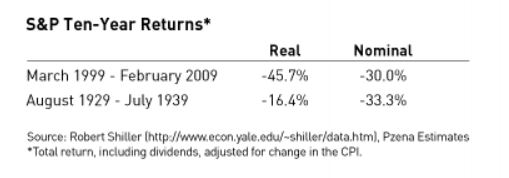

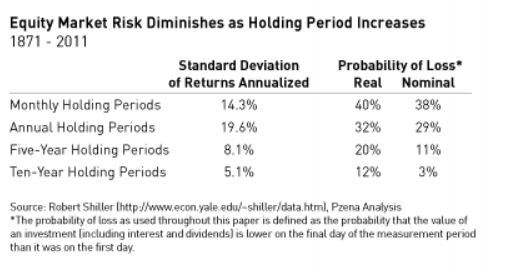
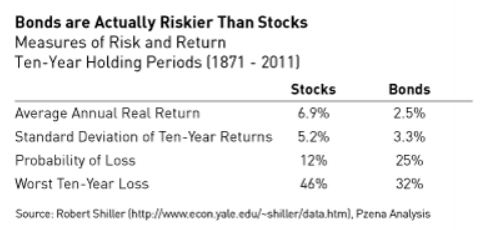
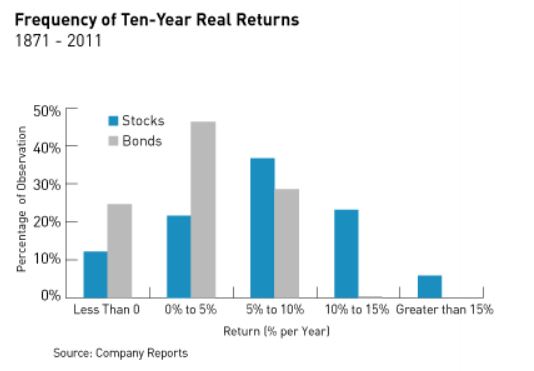
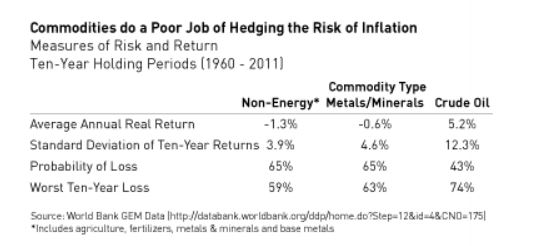
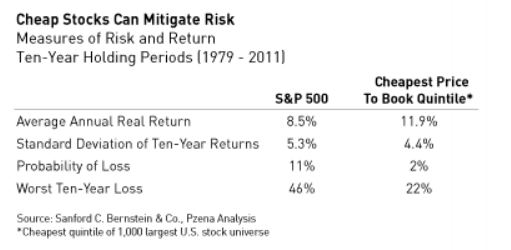
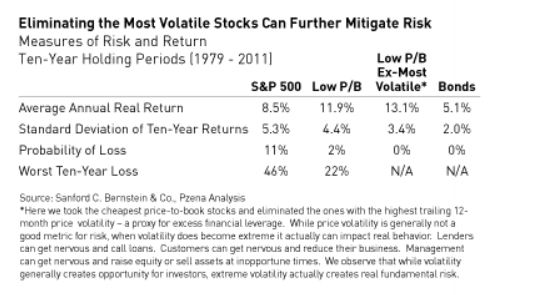
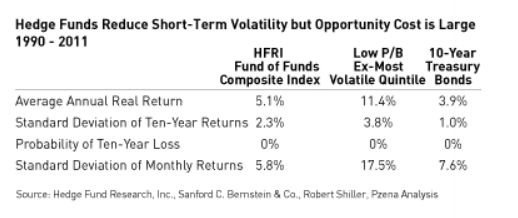
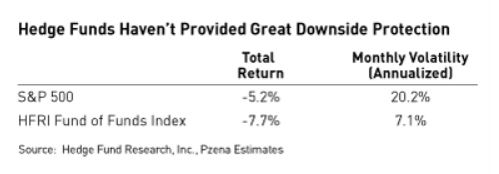
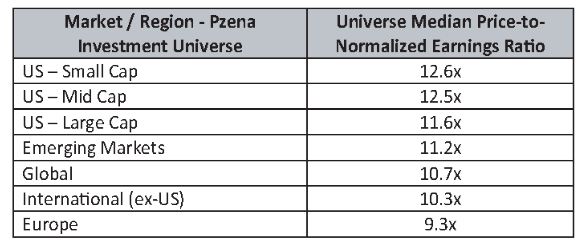
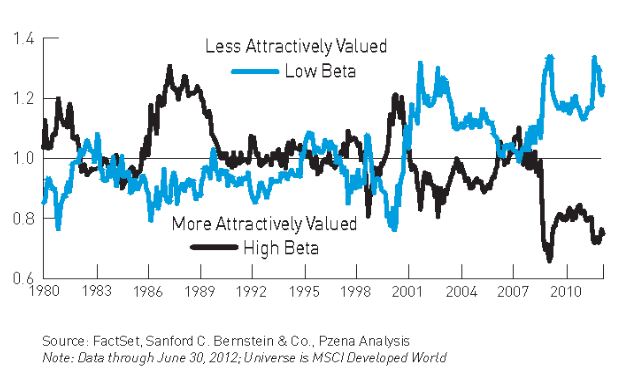
With regard to cycles, O'Shaughnessy's What Works on WS has some interesting stats. Basically, there appear to be three stages in the cycle, that can be described as 1) collateral 2) earnings and 3) momentum. First, value tends to outperform following a crash, and junk tends to rise to the surface. The time horizon has contracted and investors look to invest below asset value or with the protection of high free cash flow yields. In the middle of the cycle, investors start to look further out, and begin to value companies on traditional valuation measures, such as earnings. Third, momentum dominates and the market narrows. Traditional valuation matters less (Nifty Fifty, 1998-2000). It's possible to look for one factor, such as value, but according to O'Shaughnessy, there is no one factor because one or two good or bad years can invalidate 40 years of outperformance. Of course, if you're Warren Buffett, you can cash out if there are no more good absolute return opportunities. But that looks suspiciously similar to cycle investing.
KK,
On the very last chart, what does the Y axis represent? P/B ratio?
Hi, I don't think it's the P/B ratio but just some sort of indexed value that shows relative valuation of the two groups against each other. On the original report at the PZN website, the Y-axis is not defined, but that's what I assume (as I don't think the stocks in total will have a 1.0x P/B ratio).
When you mention financials as being on the low end, is it possible the market is right, but for the wrong reason? Interest rates have been falling for a very long time now and so refinancings have been bringing in some decent revenue. If this goes away, will earnings decrease and "justify" the market? I think the market has underpriced them due to fear, however maybe they're luckily right. I'm not sure here – I'm new to banks.
Hi, thanks for the various comments on the blog. That's a good question, will refi's go away. The assumption is that the economy/housing will eventually recover so they will get more revenues than from just refinancings.
Of course, this may not happen. But the whole point of value investing, I think, is that if you get in cheap enough and the business isn't going to go under, you'll be OK. The recovery might take longer than expected, but as long as the banks are profitable and they are attractively priced, it's fine.
There was a study not too long ago that showed why cheap stocks outperformed over time. The gist of it was that analysts couldn't really predict earnings very well at all; the results were random. So if you just bought cheap stocks that had low expectations (which may or may not come be right), you'd do well. The companies with high expectations (which may or may not be right) had high valuations and many didn't really perform as expected.
I think banks/financials are in this position now; not as much as a year ago, but still attractive.
That makes a whole lot of sense 🙂
I wasn't sure how to contact you directly, or if that's even a possibility. In case you have feedback on my comments regarding Apple, I'm open to criticism/feedback, because it is a mental item that I have yet to better understand.
Hi,
I basically agree with your comment on Apple. I know many are convinced that Apple has a long runway and can do well for the foreseeable future.
It's really hard to figure out how long they can do well. I know they have momentum right now and a small share of phones so they can do well.
But the more I read into the Jobs book (Isaacson; I haven't even finished it yet), the more I fear for the future of Apple.
I haven't read it yet but there is a new book out about Land, the founder of Polaroid. From what I read (reviews and comments about the book), it seems that Land did things right and got the culture at the company right too.
So what happened to Polaroid? Where are they now?
So even if they get the culture right, it may not matter over time. I don't know the history of Polaroid so maybe they did really well for many years after Land stepped down (if he ever did), but the question is even if a company continues to do well in the next generation, when do we know when to get off? Disney did horribly for years after Walt passed away and it took Eisner to get them back on track.
I think Apple stock is cheap for this reason; people don't have conviction on what will come next. iPhone and iPad have momentum and will do well for a year or two. Maybe more. But what comes next? When you ask that question, then it gets hard to predict earnings further out, and that's what you need conviction on to give Apple a higher multiple, and that's where I stumble. I have no confidence at all.
This doesn't mean that the bulls are wrong, of course. I just have no idea.
And my idea of playing this from the short side is just that it felt like the sentiment leaned too far on the bullish side despite the low valuation.
I actually still feel more comfortable playing this from the short side than the long side, even though maybe not for the short term as it has really tanked a lot recently and can bounce back hard no no news…
Oops, and I forgot to mention the irony that Edwin Land was one of Steven Job's heroes, and at Apple, they really stress that they got the culture right (just like Polaroid did?). I don't know if the Apple folks realize the irony of this.
Interesting blog lots of interesting stuff.